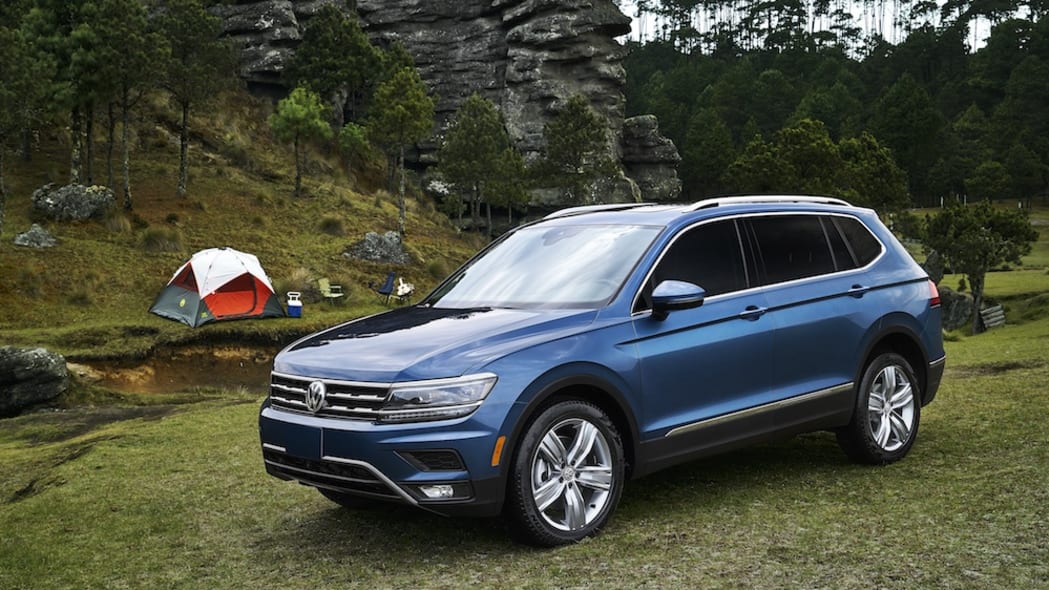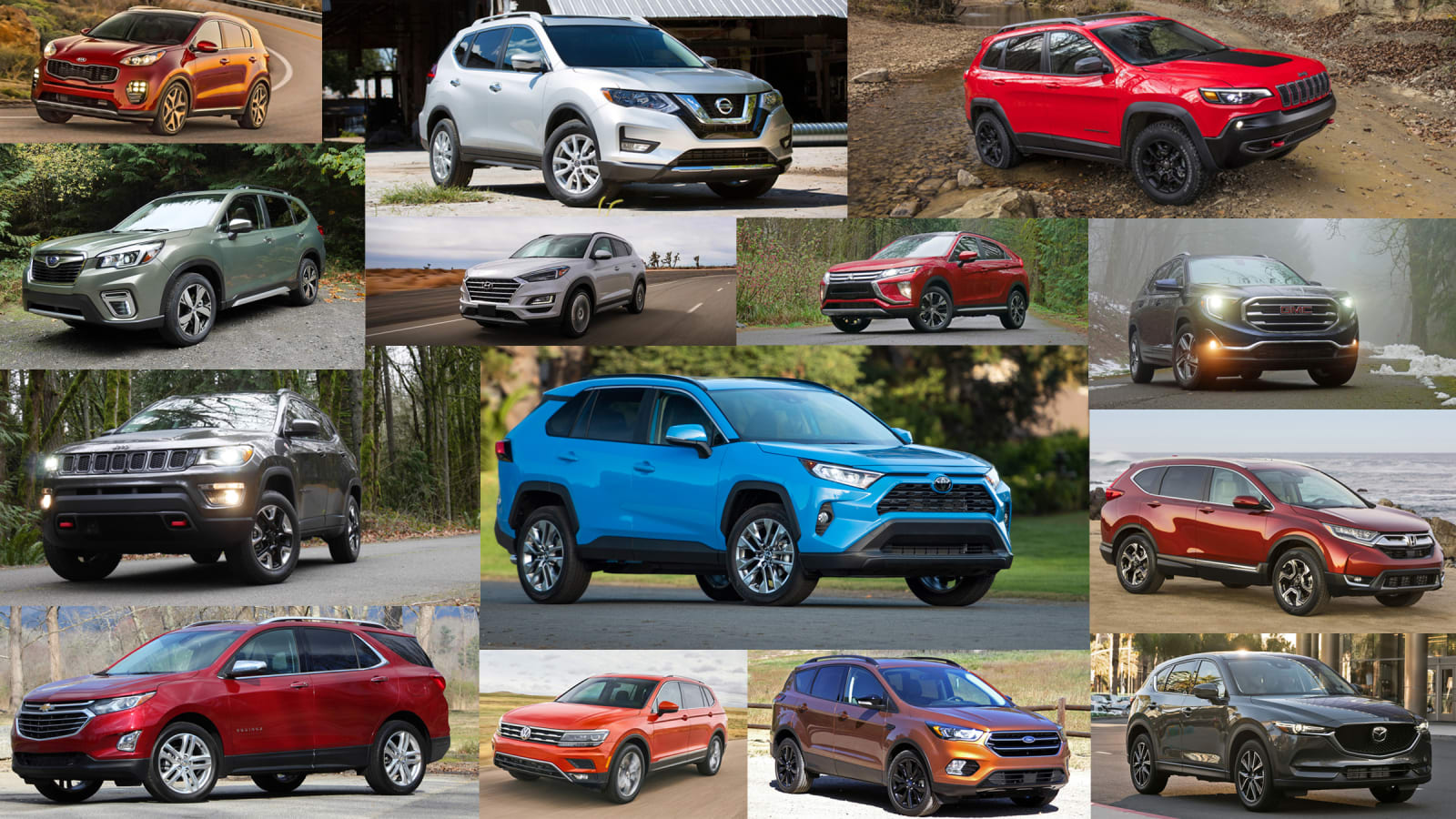2020 Volkswagen Tiguan Review & Buying Guide | Eye of the Iguana
https://ift.tt/39IUxqm
It’s big, it’s powerful, it’s packed with features, and its name comes from putting the words “tiger” and “iguana” together. Yes, that’s actually true. Thankfully, the 2020 Volkswagen Tiguan isn’t anywhere as zany as its name would suggest. It’s actually quite the sensible, practical thing, boasting more interior space than most “compact” crossovers. It’s so big, in fact, that VW managed to squeeze in a standard third-row seat for those occasional times when your kids’ friends want to come back for swim. Its cargo space is comparable to most midsize crossovers (though, to be fair, so is a Honda CR-V’s).
If anything, the Tiguan is perhaps too sensible. The interior is pretty drab, the driving experience dull, and the styling blocky and conservative. Avoiding zany was smart, but some more personality would still be nice – especially in a segment where many carve out niches within the sport, luxury or rugged realms. Even the Tiguan’s sportier R-Line trims pictured above don’t go far enough. If you’re sticking with practical considerations, though, take a long look.
What’s new for 2020?
Forward collision warning and automatic emergency braking are now standard on the base S trim along with blind-spot and rear cross-traffic warning, meaning they’re all included on every 2020 VW Tiguan. Same goes for in-car WiFi and the most recent generation of VW’s Car-Net vehicle app-based remote services. Wireless charging is also now available.
Note that the Tiguan, like every VW, has less warranty coverage for 2020. Its four-year/50,000 miles is still better than most non-luxury brands, but it’s still far less than 2019’s six-year/72,000-mile coverage.



What’s the interior and in-car technology like?
The Tiguan’s interior is designed and laid out in a simple manner as Volkswagen’s Golf. It’s not especially stylish, and some would even call it plain, but everything is easy to use and find, and the materials are of a competitive quality. As expected for a crossover, the driving position is high, and visibility is phenomenal thanks to a tall roof and low windowsills and dashboard.
Depending on trim, there are 6.5- or 8-inch touchscreens available, but the software and menu structure within them is basically the same. The 8-inch screen, however, does come with touch-sensitive menu buttons around its perimeter rather than 6.5-inch unit’s conventional buttons. The interfaces are clean and simple, and the screen is very responsive. Apple CarPlay and Android Auto come standard. Overall, it’s one of the better systems available.
Buyers who choose a Tiguan SEL or higher will also be treated to the Volkswagen Digital Cockpit, which is basically the same all-digital instrument panel as Audi’s Virtual Cockpit. It’s a bright, high-resolution screen that’s highly attractive. It operates so smoothly you could be forgiven for thinking it had real dials, but importantly, it places infotainment displays such as the navigation map and audio information prominently in front of the driver.

How big is it?
The VW Tiguan is the longest “compact” crossover, and it matches that with the longest wheelbase, too. Perhaps not surprisingly, then, it’s also the heaviest in the segment. Inside, it’s a slightly different story. It’s indeed one of the most spacious in the segment and you should find more family-friendly space than in most competitors, but it’s also not a class leader in terms of rear seat or cargo room. The Honda CR-V and Nissan Rogue best it, while the Toyota RAV4 matches it.
The Tiguan does, however, have an ace up its sleeve: a third-row seat that comes standard on all front-wheel-drive models, and is optional with all-wheel drive. Although primarily intended for children, and for infrequent use, only the Mitsubishi Outlander and the slightly larger Kia Sorento and Dodge Journey offer three rows in this general size class. Note that cargo space is reduced with the third-row seat.

What’s the performance and fuel economy?
Every 2020 Tiguan comes standard with turbocharged 2.0-liter inline-four that makes 184 horsepower and a strong 221 pound-feet of torque. Power goes to an eight-speed automatic transmission. The only powertain choice is whether you want front-wheel drive or “4Motion” all-wheel drive.
The FWD Tiguan offers fuel economy numbers of 22 mpg city, 29 highway and 25 combined. The AWD Tiguan does slightly worse with 21/29/24 mpg. Those numbers are on the low side when compared to the CR-V, RAV4 and Forester, but keep in mind the Tiguan’s considerable extra torque that makes it a stronger performer. In that light, its fuel economy is about the same as the Ford Escape and Mazda CX-5‘s optional turbocharged engines.

What’s it like to drive?
We’re happy to report that the Tiguan drives like a big VW Golf. That’s not entirely surprising as it shares the same MQB platform that underpins, well, almost every VW, and its engine is a close relative of the GTI’s 2.0-liter. More specifically, the Tiguan feels much lighter than its portly curb weight would suggest, which boosts confidence when hustling through corners or doing the traffic slalom. Steering is light and pretty numb on center, but ultimately precise. There’s also a fair amount of body roll, and the ride is on the soft side, but it feels stable and instills confidence.
Moreover, the standard Tiguan engine is equivalent to the upgrade option on some of its competitors, and provides enough power that you’ll never feel left behind by traffic. The turbo 2.0-liter is quiet at low rpm, but becomes gruff and loud when accelerating hard. It’s disappointing when the cabin is otherwise extremely quiet. The eight-speed automatic transmission is smooth and picks gears well, though it’s not especially quick to shift.
What more can I read about the VW Tiguan?
More details about what’s new for 2020.

An in-depth review of what changed for the Tiguan when it was completely redesigned, including information about its engineering and design.
Some competitors have been tweaked since we produced this (the Ford Escape was completely redesigned), but for the most part, it should give you a better idea of how the Tiguan’s dimensions and engine specs compare to those in the compact crossover segment.

What features are available and what’s the price?
Pricing starts for the 2020 VW Tiguan at $25,965, including the $1,020 destination charge, for a front-wheel-drive model. All-wheel drive is a $1,300 option for each trim level except the range-topping SEL Premium R-Line that has it standard.
Allow wheels, automatic headlights, cloth upholstery, a 6.5-inch touchscreen, Apple CarPlay, Android Auto, and one USB port are among the standard features. Stepping up the SE represents good value, however, as it adds proximity entry and push-button start, dual-zone climate control, leatherette upholstery (good for wear and stain prevention), a leather-wrapped wheel, a power driver seat, heated front seats, the 8-inch touchscreen, three USB ports and a 9-speaker Fender sound system. That’s a lot of stuff for $2,150. The Tiguan’s value becomes questionable once into the $30,000 range.
Note that the R-Line models get special sportier exterior trim. You can find a more comprehensive breakdown of features, specs and local pricing here on Autoblog.
S: $25,965
SE: $28,115
SE R-Line: $31,315
SEL: $33,265
SEL Premium R-Line: $39,815
What are its safety equipment and crash ratings?
For 2020, every Tiguan now comes standard with forward collision warning and automatic emergency braking along with blind-spot and rear cross-traffic warning (dubbed “Side Assist” and “Rear Traffic Alert”). The latter systems are almost always optional on competitor vehicles, yet are invaluable features. Good for VW. Standard on the two SEL trims are lane-keeping assist and adaptive cruise control. Parking sensors show up starting with the SE R-Line.
The Tiguan was named a Top Safety Pick by the Insurance Institute for Highway Safety. It got the best possible ratings in all crash tests and for its forward accident avoidance system. Its standard headlights got a “Poor” rating but the SEL Premium R-Line’s LED headlights got the best-possible “Good.”
Related Video:
Auto Blog
via Autoblog https://ift.tt/1afPJWx
January 8, 2020 at 10:42AM